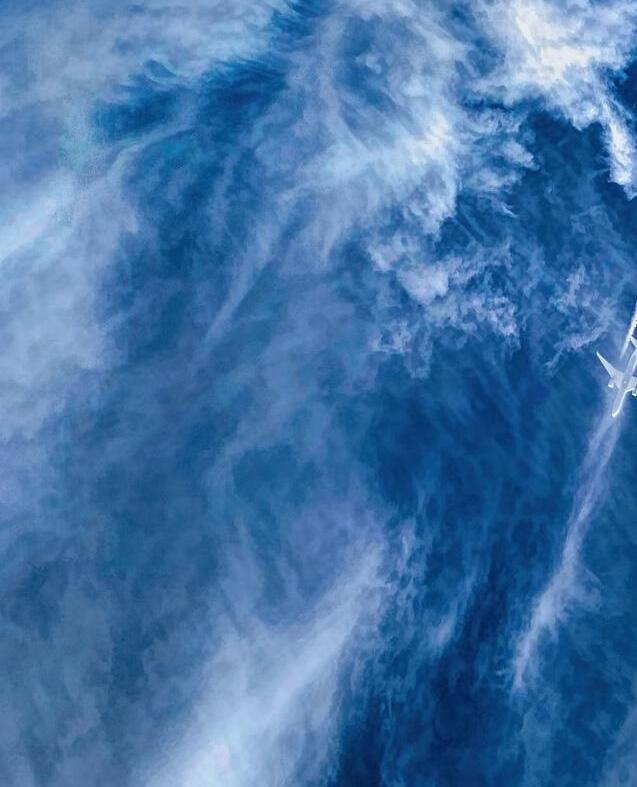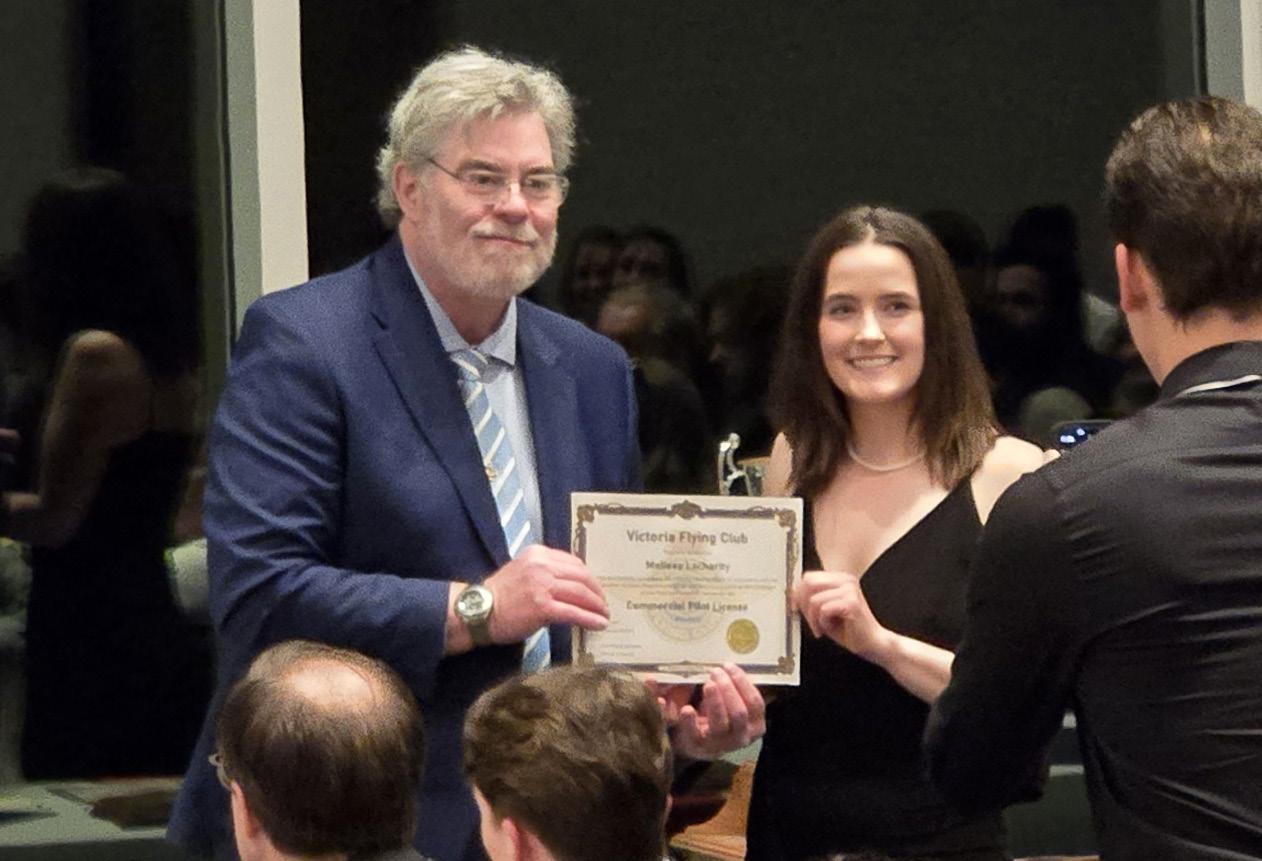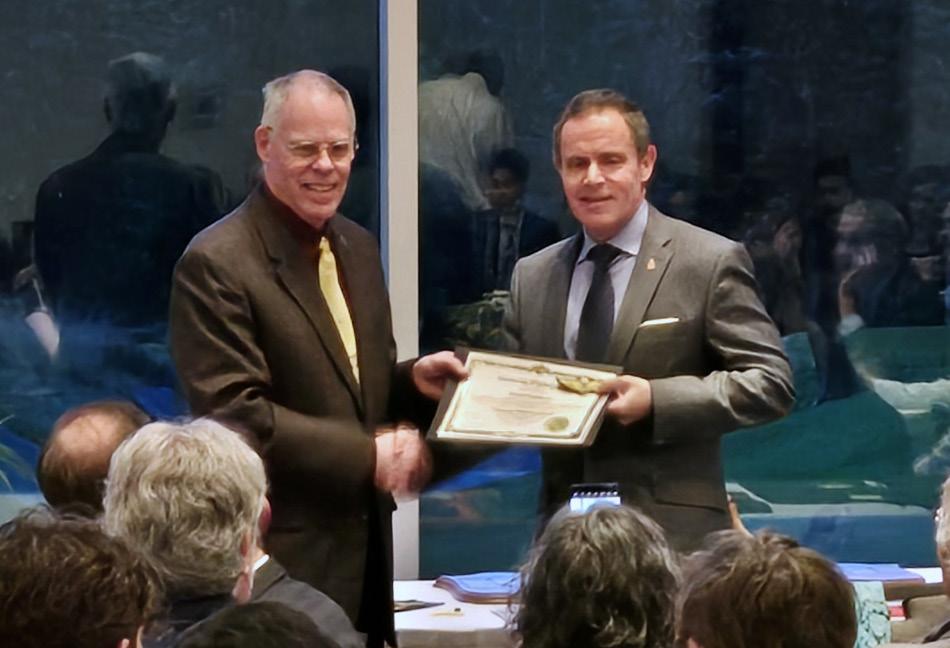

The Patrician
“T

(Victoria
BOARD OF DIRECTORS
PRESIDENT Laurie Ingalls
VICE PRESIDENT Colin Williamson
SECRETARY Joey Martin
TREASURER Reg Smith
DIRECTORS Paul Rutten
Glen Rippon
Don Devenney
Al Johnston
GENERAL MANAGER Mike Schlievert



GROUND SCHOOL SCHEDULE
PRIVATE PILOT LICENCE GROUND SCHOOL
PPL #25-04: MAY 5, 2025 TO JULY 20, 2025
Sundays (09:00 - 16:00)
Instructor: Neil Keating (Zoom attendance possible by arrangement)
COMMERCIAL PILOT LICENCE GROUND SCHOOL
CPL: APRIL 5, 2025 TO AUGUST 2, 2025
Saturdays (09:00 - 16:00)
Instructor: Ken Kosik, Ben Holden, and Neil Keating
MOUNTAIN AWARENESS TRAINING GROUND SCHOOL
MTA #24-XX DATES AS REQUIRED OR REQUESTED.
Individual scheduling requests are available for Private Pilot Licence, Commercial Pilot Licence, Mountain Awareness Training (MTA), Remotely Piloted Aircraft Systems (Drone) Courses (RPAS) by request.
Individual tutoring is also available for PPL and CPL upon request.
Confirm your attendance with Neil Keating on cell at 204-291-9667 and VFC Operations (Russell) at 250-656-2833.




Chase Bidney
Tristan Smith
FIRST SOLOS
Miko Tsares
Chapman Chen

Dayton Parsons
Tim Henderson







Instagram! Congrats Lauren Pederson!
Korby! First solo for Ryan Masingale!
MEMBER ACHIEVEMENTS
PPL WRITTEN TEST
Heather Blanchette
William MacTavish
Alexander Mackenzie
Peter Blencowe
PPL FLIGHT TEST
Liam Ross
Phaelan George
Ethan Van Tol
Cayden Brune
CPL FLIGHT TEST
Matthew Field

CPL WRITTEN EXAM
Kevin Transchel
Simon Miyashita
MULT-ENGINE RATING
Julia Jensen
Melissa Lacharity
CLASS 4 INSTRUCTOR RATING
Blair Hohol
INRAT WRITTEN EXAM
Ben Toner
Gavin Johansen
WELCOME NEW VFC MEMBERS
Walker Welsh
Bruce Cousins
Hang (Stan) Shi
Dakota Stubbs
Michael Greer
Fran Bugagon
Elisabeth Martin
Eric Cogo Leocadio
Fatimah (Ada) Hmoud
Michael Quayle
Caleb Egbago
Daniel Mongeau
Benjamin Gijzen
Zoe Leduc-Wright
Branden Forkutza
Muhammed Al Ibrahim
Stanislav Cherviakov
Gabriel Quimel
VFC MENTOR PROGRAM
Do you want other pilots to fly with, split flight cost, share knowledge, or get help getting to a new airport for the first time? Find potential mentors and their resumes posted on the Mentors bulletin board beside the Dispatch counter. Contact details are on each mentor's resume or you can email mentors@flyvfc.com for more information.
Interested in becoming a mentor? There's always room for more experienced pilots! Send an email to mentors@flyvfc.com for more information on how to join up!

THE PROFESSIONAL
PILOT
by David Gagliardi
“‘Professionalism’ is commonly understood as an individual’s adherence to a set of standards, code of conduct or collection of qualities that characterize accepted practice within a particular area of activity.” -Universities UK et al. 2004
FLIGHT TESTS
Professional pilots embody the attributes in the definition above. Being a professional pilot has nothing to do with what license you hold, it is ultimately about the attitude with which you approach flying. This article is the tenth in a series that will examine aspects of piloting light aircraft to a professional standard. Flight tests are the right of passage to qualify as a Private Pilot and to attain additional qualifications and privileges. Professional Pilots approach the flight test with a professional attitude. A large determinate in succeeding with your flight test is the amount of preparation you put in. Obviously the better prepared you are the better you
are likely to do, however there are tips that can make the experience better. The purpose of this article is to provide those tips from my point of view as a pilot examiner (PE) so that you give yourself the best chance to succeed.
1) Read and understand the Transport Canada Flight Test Guide (FTG) for the test you are attempting. I still see candidates that show up for flight tests and don’t know what’s in the FTG. PE’s don’t colour outside the lines. The FTG is your checklist for what you need to know and do on a flight test. Your instructor should have gone over the FTG with you before the ride, but you need to make sure that you understand everything in it. Carefully go through the performance criteria



for each exercise and reach out to your instructor if there is something you are not sure of.
2) Find out ahead of time how the examiner would like to be paid. Personally, I don’t do cheques anymore I will either take cash or an interact e-transfer.
3) Don’t show up for the flight test sick. This may seem obvious but knowing how hard it can sometimes be to schedule a flight test, there may be a temptation to show up even if you are not well. I had this happen to me when a candidate showed up with an obvious very bad cold. I asked him if he was OK to fly and he said yes, which ended the ride right there as a Pilot Decision Making fail, not to mention I did not

want to share a cramped cabin with this guy and get what ever nasty bug he had.
4) Show up early and organized. This includes, if possible, checking out the airplane before the test. Find out if there are any unserviceable components, oil and fuel are good, clean out any trash in the cabin and organize the seatbelts. A personal pet peeve is dirty windshields. See and Avoid is hard enough with a clean windshield but can become problematical if the airplane has killed every bug in a 10 mile radius.
5) Insist on a complete preflight test with ideally another experienced instructor. This should mirror the entire test including the ground portion.

You will then have an idea of what to expect on the actual test which will make the process less frightening and also identify any weak areas that you can fix before the test.
6) On the ground portion:
a) Don’t try to BS the PE. He/she knows way more than you do so if you don’t know the answer fess up immediately and ideally indicate where you go to look up the answer
b) When asked a question that doesn’t seem clear to you ask the PE for some more context or information or say something like “Just so I am clear you want to know/me to explain/me to do XXX”
c) When asked a question, don’t


answer right away—take a few seconds to organize your thoughts before replying. Try to be brief and answer just what you were asked. If the PE wants to know more let them ask. If you end up going down a rabbit hole, stop talking. Reset the conversation with a general comment like. “ I realize I am not explaining that very well. Let me start over”. As an examiner I am totally happy with that and it usually a reflection of the fact the candidate was nervous.
d) As an examiner I will take notes throughout the flight test. The fact that I am writing something doesn’t mean you just failed it is just information so that I have everything I need to fill out the flight test report and provide an effective debrief so
the fire extinguishes etc etc. Do not do anything without my command so we don’t work at cross purposes. In the event of an aircraft issue that doesn’t require immediate action for example a failure of one radio, we will asses the impact the aircraft defect will have on the flight test and decide if we can continue or pause the test and return to base. If the decision is to continue it has to be mutual and we both get a veto.
8) The failed flight test:
a) The flight test is assessed as a pass or fail, however I don’t tell candidates they have failed. I tell them there were unsuccessful in the following area(s) and therefore are not presently eligible to hold the license or rating. The fact that a candidate failed isn’t a value judgment on their worth as a pilot or as a person, it is simply a reflection that they are missing a knowledge or skill element necessary to be a safe pilot. When they address that deficit, they

will be successful. I think that is the best way to think about a ride bust.
b) The flight test isn’t over until the PE says so. I have seen a few unfortunate candidates who did poorly on a maneuver but not necessarily bad enough to fail , but they then obsessed about what happened to the detriment of the succeeding maneuvers and then failed themselves. If you pooch something on the flight test you have to put it in the rearview and concentrate on the next one. The flight test is only over when the PE says it is over.
As a PE I want the candidate to succeed and start every flight test with the view the candidate will be successful. Unfortunately, that is not always the case but you are much more likely to experience a mutually beneficial outcome with good preparation and a positive attitude.



STUPENDOUS MOUNTAIN FLYING.
Lite rally .
Camille Angus
Are you a PPL wondering if you should take VFC's Mountain Flying Course? Or, having checked that box, are you still looking for a stretch mission to use it?
I have three responses for you: Highest Mountain, Highest Waterfall, and Highest Airport. Oh, and glaciers! Clearly three words are not enough. Just know that amazing things are possible after your mountain training.
OUR MISSION
Port Hardy (CYZT) eastward to Knight Inlet, northward up the inlet to the edge of the Chilcotin Plateau, then eastward for a first landing at Anahim Lake (CAJ4).
After refueling (W&B permitting!) go west retracing part of the earlier track but continue westward for the long descent into Bella Coola (CYBD).
On the ground, assess fuel and weather again before continuing westward for a full stop at Campbell Island's airport called Bella Bella (CBBC).
Finally, proceed southward back to Port Hardy.
MISSION PREP
Key to the mission were the following: preparation, preparation, preparation.
Preparation cannot be overstated. In the mountains the ever-present threats of wind and clouds are magnified. But mountains also force us to deal with density altitude, something rarely faced by us PPLs based in Victoria.
Factors to consider for this type of mission:
TIMING
• Summer is likely the only time all legs will be VFR—plus passengers want visual conditions for the sights
• Fly the mountain legs earlier in the day—summer heat means high density altitude (thin air, poor performance)


• Remember the survival gear mantras: "If you don't have it on you, you won't have it with you" (egress time may be limited) and "Two is One and One is None" (redundancy, e.g. have at least two ways to make a fire as one may fail)
• Capture weather and flight info beforehand —phone service and Wi-Fi are non-existent en route and may also be unavailable at remote airports
• Take sufficient water & proteinrich snacks as they could be difficult/ impossible to obtain at remote airports
OTHER
• Paper map(s) are highly recommended because they: 1) can stay open as a continuous

reference — it is easy to take a wrong turn at a valley fork, making an emergency canyon turn necessary 2) are immune to overheating and battery failure
• A blood pulse oximeter is a cheap/ easy way to periodically check for hypoxia
• Extra battery packs& cables—a safety item for your personal nav/comm devices but also consider them for keeping cameras going. But beware of battery duplication between passengers and crew (the weight adds up).
CYZT BASE
Prior to mission day we flew to Port Hardy (CYZT) and checked into our favourite hotel, the Kwa'lilas. While


Glacial runoff in Knight Inlet.
Another glacier in Waddington Range.

Canada's highest free falling waterfall, depending on which free falling definition is used. Water from Turner Lake above drops vertically 850 ft.. at the start and in total cascades 1,316 ft. down to Lonesome Lake . We flew one orbit around the falls (small loop in the green track above — video clips at johnbullock.net/mountain-flying) and then continued north to the Atnarko

waypoint and the start of the Chilcotin Plateau.
Next, we headed east over the infamous Bella Coola Road — 18% grades but, you know, … we’re flying :) After only a few minutes flying we were over strangely flat terrain and preparing for the quick descent to Anahim Lake (CAJ4).


Valley east of Trophy Lake.


Mouth of Bella Coola River.
HIGHEST AIRPORT
At 3644 ft. MSL Anahim Lake is Canada’s highest airport with commercial traffic. Temperature on mission day was 31°C so density altitude calculations and awareness were crucial.
After landing we took on a small amount of fuel and then departed for our second leg of the day. We retraced our path over the crazy switchback highway. This time however, we continued westward and prepped for the long descent into Bella Coola (CYBD).
Just prior to the descent we passed Stupendous Mountain, an impressive snow-covered peak with an awesome name (see photo at end of the article).
least it makes the winds line up nicely with runway 23.
After departing Bella Coola,we followed a westward track to Bella Bella (CBBC). There, after landing, I had my first experience at being marshalled to a stop. This probably only happened because the ground crew was already out prepping for departure of the twice-

daily Pacific Coastal flight to Vancouver.

Landing at Bella Coola was gusty as expected. Early afternoon heating causes surface winds to channel through the narrow valley, concentrating them near the airport. At
Finally, we began our fourth and final leg back to Port Hardy. The day was so clear that during the one-hour flight we imagined we could somehow see Japan off the starboard wing :)
Preparing for landing at Bella Coola.

DEBRIEF
We encountered no traffic on the first three flight legs and saw no people on the ground at the first two airports. We also heard no radio calls other than a couple far away position reports. After departing Port Hardy,the first real sign of life was the marshaller at Bella Bella.
• On a remote mission like this, be prepared to be selfsufficient for the duration
On the take-off roll at Anahim Lake I went full rich out of habit. Wrong! I caught it on the roll but that is not the time.
• Document/flag any nonroutine density altitude procedures you’ll need — from the POH:above 3000 feet, LEAN to obtain maximum RPM. Our departure for next day’s return to CYYJ was delayed by 6 hours due to a heavy marine layer over CYZT.
• Marine fog at Port Hardy is common. Carefully plan your alternates going into CYZT. And stay in touch with dispatch if your return to CYYJ is delayed

Hunlen Falls.


CAPTAIN'S LOG: SUPPLEMENTAL
This mission was two years in the making. Aircraft availability along with several days of near-perfect weather can take a while to line up, plus we had a string of personal scheduling conflicts. If this happens to you,consider a shorter mission that covers most of the highlights. Either way, your preparation and persistence will be rewarded stupendously.

Now that's a Stupendous Mountain.

Queen Charlotte Sound enroute to Port Hardy.
2025 WINGS BANQUET
On March 28th, 2025, the VFC held its yearly Wings Banquet event to congratulate and recognize its new and continuing pilots. The event was held the picturesque Olympic View Golf Course and the VFC turned out in their best!
We thought end this month's issue with some photos of the event for those who would like to commemorate or were unable to attend. Enjoy!
Awards and wings ready to be handed out.


BANQUET






The VFC showed up in style for the banquet!










The wings!















































